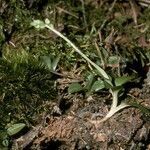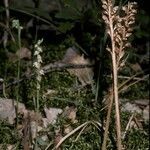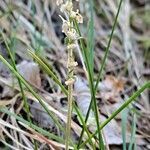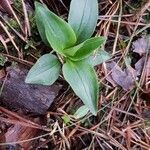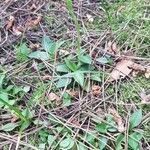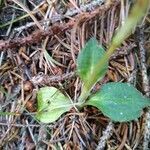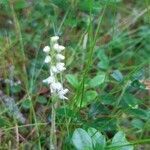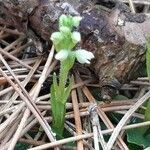Slender, mostly 1–2 dm; scape with 2–4(5) bracts; lf-blades ovate or oblong, 1–3 cm, dark bluish-green, in our plants usually white-reticulate, the midrib and veins typically green, but the lateral and cross-veins bordered with white (or pale green); infl loose, spirally secund, 3–6 cm; galea 3–5.5 (avg 4) mm; lip 3–4 mm, deeply saccate, the prominent, slender, abruptly deflexed beak-tip with spreading margins; rostellar beak 0.2–0.6 mm, scarcely prolonged beyond the blunt anther; 2n=30. Dry or moist cold woods, especially under conifers; circumboreal, in our range s. to N.Y., Mich., and Minn., and in the mts. to N.C. July, Aug. Our plants, with white-veiny lvs, belong to var. ophioides Fernald, mainly of e. N. Amer. (G. o.; Peramium o.)
Leaves: blade uniformly green or with green lateral veins bordered by white or greenish white tissue, narrowly to broadly ovate, 1.1–3.2 × 0.5–1.8 cm, apex acute or obtuse. Inflorescences secund, infrequently loosely spiraled, 7–36-flowered; peduncle 3–18 cm. Flowers: lateral sepals 3–5.2 mm; petals distinct; hood 3–5.5 mm; lip narrowly saccate, lanceolate, 1.8–4.8 × 1.4–3.2 mm, apex acute, recurved or reflexed, inner surface with 2 or 4 glandular ridges; anther inflexed, not immersed in shallowly concave clinandrium, apex apiculate; pollinia blunt; rostellar beak 2-pronged, 0.2–0.6 mm, shorter than body of stigma; viscidium orbiculate. 2n = 30.
